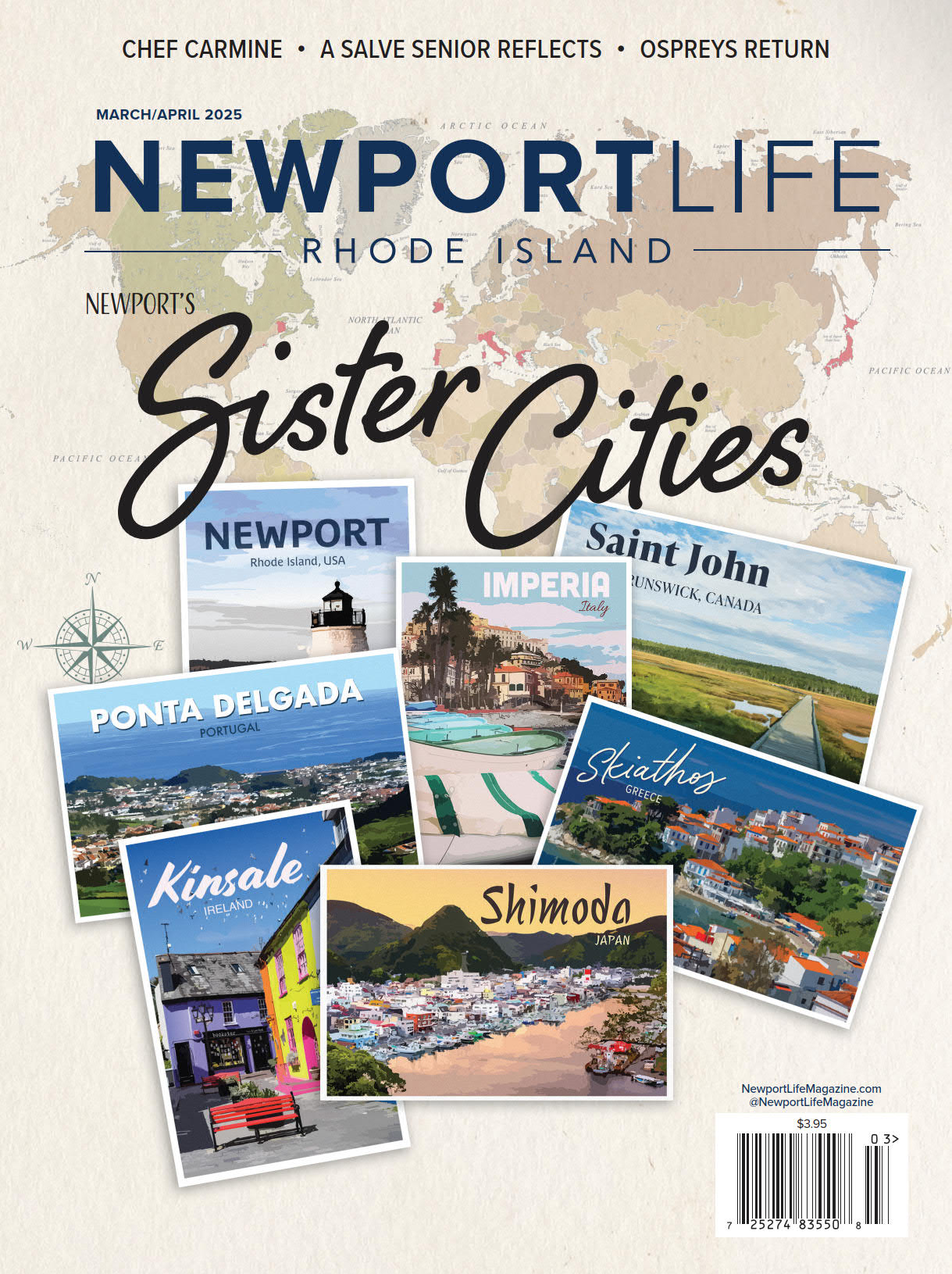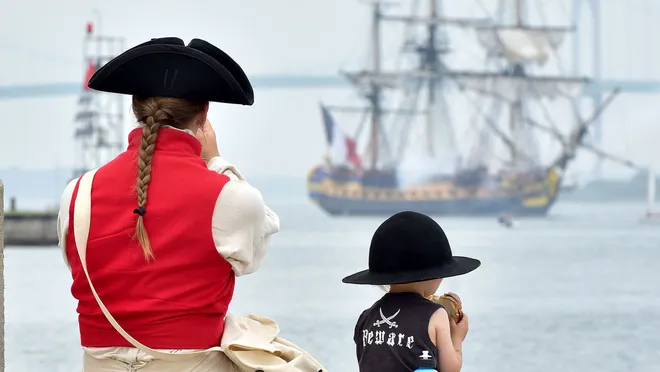Living historians keep Newport’s Colonial history alive
By Larry Lindner
For Portsmouth resident Renee Walker-Tuttle, appearing in public in period garb is about a love for 18th-century clothing and the way it reflects the culture and values of its time. For Newport native Charles Roberts, it’s about making sure people understand that Blacks and Native Americans helped win the Revolutionary War and were indispensable to the creation of the United States. For Middletown’s Brandon Aglio, portraying people like a dockworker or shopkeeper, rather than the likes of George Washington or John Adams, is an attempt to make the 18th century relatable, to let people know what it would have been like to be themselves 240 years ago.
Newport Historical Society launches ‘History in the Making’ series with Sheldon Whitehouse
All three are living historians — volunteers who make a hobby of dressing up in clothing of long ago and presenting a view of the past to contemporary audiences. While the reasons for their interest may differ, what unites them is an abiding interest in how our country took shape, coupled with a desire to share their knowledge.
Think of Trekkie convention, except with britches and muskets
When people think of living historians, what often comes to mind are reenactors — men (typically) who dress up in military uniforms and re-create specific battles that took place centuries ago. Living historians of that ilk are not necessarily in it to impart a greater understanding of American history, but to engage in the experience for its own sake.
“It’s a sometimes more insular approach to living history, where they don’t really interact with the public,” says Aglio, who, along with participating in living history programs for such organizations as the Newport Historical Society, also reenacts with the Artillery Company of Newport and the 10th Massachusetts Regiment. “If someone has driven several hours to do something and hasn’t seen people he enjoys getting together with for quite a while, he’s not going to care if five people show up or 500,” Aglio explains. “Reenactors often perform for themselves.” Think of it as a Trekkie convention, except with britches and muskets instead of Spock ears.
Here’s how you can help:42 Newport County nonprofits want your support on 401Gives Day.
Granted, some military reenactors do enjoy conversing with the public, including not just Aglio, but also Tiverton resident Charlie Walsh. “The biggest draw when I started was engaging in battles and shooting off a musket,” Walsh acknowledges. Twenty years later, he says the biggest attraction is mingling with the public and answering their questions. During one reenactment in Fort Lee, New Jersey, a spectator asked him what the soldiers thought of The Federalist Papers? “Most soldiers back in those days didn’t read,” he replied. “They were hungry a lot of the time. They didn’t have solid opinions on the Federalist Papers.”
But reenactors like Walsh and Aglio are more the exception than the norm, says Ruth Taylor, the executive director of the Newport Historical Society. Generally, she observes, “they like to make a spectacle; they like to do it from afar. ‘Don’t get close. Don’t talk to me.’
“The way more interesting thing,” Taylor says, “is helping the public tear the fabric of time a little bit, creating the potential for an immersive experience that creates empathy and understanding.”
That happens more at sites like centuries-old houses that serve as museums, where living historians don’t aim to re-create an actual event, but instead present an improvisational tableau that invites a give-and-take with the audience.
More history:Newport’s living legacy
During a recent program at Newport’s Wanton-Lyman-Hazard House, a red colonial from the late 1600s that sits right on Broadway, living historians told visitors that the average family around the time of the American Revolution had to spend more than 50 percent of their income on food; that Newport was the fifth-largest seaport in British North America until English soldiers nearly devastated the city in 1776; that Irish people did not begin to populate Newport in a serious way until the Gilded Age began in earnest in the 1870s and they were hired as domestic servants; and that chocolate was the third most common beverage in 18th-century Newport, just behind coffee and tea. (They described the drink’s consistency as a runnier McDonald’s milkshake.)
While spectators gathered around the costumed interpreters in the house’s side yard, a few drivers honked their approval as they passed. The living historians took it in stride as they riffed on life two and a half centuries ago, always deftly taking the discussion in the direction of the audience’s questions and comments.
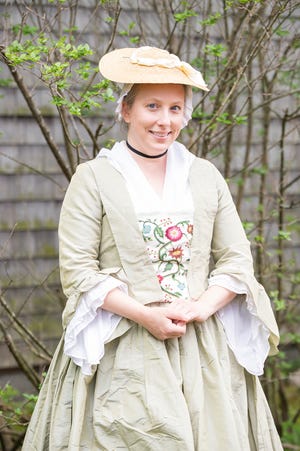
Newport Historical Society’s Director of Public Programs, Elizabeth Sulock, was on hand in a beautiful gown that depicted how a woman from the leisure class would dress.
Sulock carefully explained all the layers of clothing women wore at the time. She and the others didn’t talk in “thee’s” and “thou’s” but, rather, communicated in what they call “first person light,” acting like someone from the past but willing to step out of the role to make a point more accessible to people who stop to listen and ask questions. (Thus, the reference to a McDonald’s shake.)
For each event her living historians put on, Sulock creates a Dropbox file of research that includes primary sources like newspaper articles, in addition to research papers. For niche topics like taverns in 18th-century Newport, she will create subfiles. “I don’t think people realize how much research is involved for a one-day event,” she says.
Reflection on Juneteenth:Newport’s Black history educators reflect on growth in support
Sulock is particularly interested in women’s garments of the period, as is Portsmouth’s Walker-Tuttle, a textile conservator whose list of credits includes helping to restore and preserve the flag that inspired The Star-Spangled Banner. Walker-Tuttle uses clothing as currency for presenting a fascinating history of how the United States came to be, sometimes explaining in her role as living historian that flax was the predominant fiber in the 18th century, grown right on Aquidneck Island. The Colonists were angry that they were sending it to Europe to be made into linen and then forced to buy it back, with a tax added.
“A lot of why the Revolutionary War started had to do with consumer goods,” Walker-Tuttle explains. Of course, she says, enslaving Africans for the sake of growing and marketing cotton eventually resulted in changing the materials people wore, making cotton the norm and reducing flax’s influence on the market. Today, flax-linen comprises less than one percent of the world’s textile consumption.
Walker-Tuttle also puts on a living history program that focuses on a lady’s boudoir table for hair and cosmetics, for which she has collected period grooming tools. “People love it,” she says. “They think it’s such an Instagram moment.”
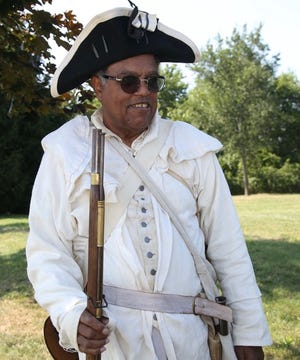
For Charles Roberts, being a living historian is perhaps at least as much a duty as a hobby. “I joined the reenactors because of the authenticity of a Black person being in a Black regiment,” he says. Roberts, whose uncle Paul Gaines was the first Black mayor of Newport (and the first Black mayor in New England), is a member of the 1st Rhode Island Regiment, also called the Black regiment.
The original First Rhode Island Regiment was not composed strictly of African Americans. In fact, most of the people in that regiment were of European descent. But it did have people of African ancestry, as well as Native Americans. The Black members consisted of both free and enslaved men. Those who were enslaved had been bought from their owners to serve in the army and could earn their freedom at the end of the war if they were good soldiers.
“I have such a sense of urgency about presenting our history, because it’s something that hasn’t been exposed for hundreds of years,” Roberts says. “I feel like I’m fulfilling a responsibility.”
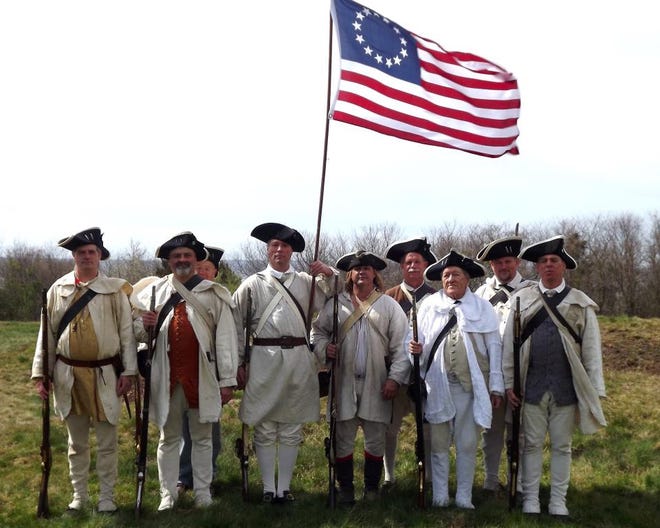
He explains that enslaved people were sold right on Bowen’s Wharf after enduring the Middle Passage. While some were able to obtain their freedom, others were not. He also makes clear that he’s not a reenactor in the strictest sense, as he doesn’t participate in the re-creation of historic battles. Rather, he engages in the Black Regiment’s military drills, having learned as a living historian just how heavy a musket is (30 pounds) and what it took to get everybody to fire in unison. It’s common to take such bravery for granted, he says. “But during the Battle of Rhode Island, the Black Regiment helped hold the line so the retreating army could get across to Tiverton and stop the British from destroying our forces. That battle was almost like Dunkirk.”
At the moment, Roberts is the only Black member of the regiment. He is hoping to get young Black people involved.
Accuracy, without whitewashing history
The Newport Historical Society’s Taylor acknowledges that most living historians in the area are of European descent and says her organization has begun conversations on how to portray the past without literally whitewashing it.
“Newport during the Colonial period was financially and logistically deeply involved in the slave trade,” she says. “There were a lot of people of color who were free, but there were a lot of slaves, as well. We want to make sure people are not participating in an overly romanticized view of the past.”
In the same vein, she says conversations have begun around the authenticity of military reenactments. In real life, she relates, the battlefields were littered with blood and gore and amputations. How do you provide context when you’re portraying violence but nobody’s actually getting hurt? It romanticizes the violence of war and what people actually endured.
“We don’t have answers yet,” Taylor says. The conversations have only just begun. But she suspects that as sensitivity to difficult issues of history comes to play a greater role in how we look at our past, living historians will be able to present an increasingly truer picture of what life was once like.
